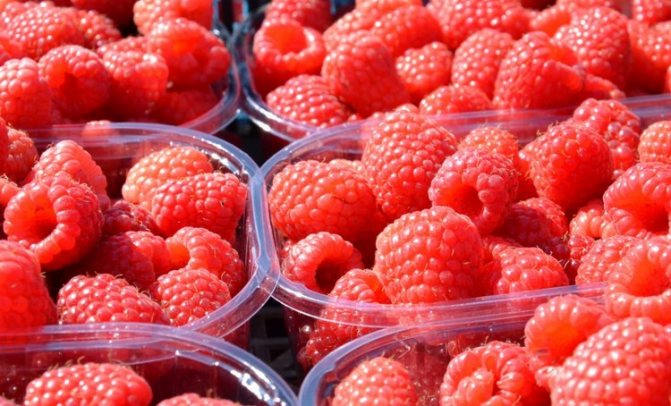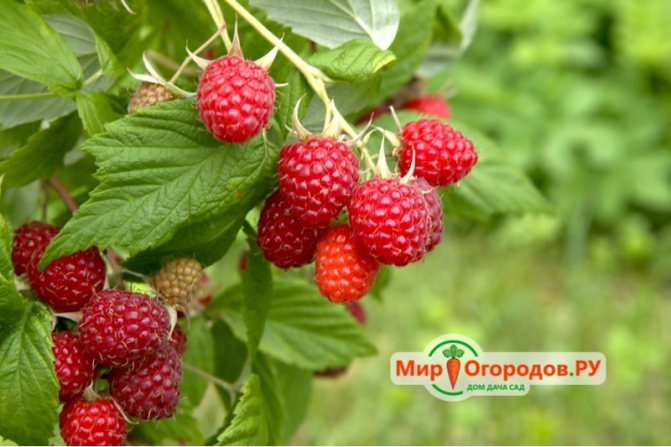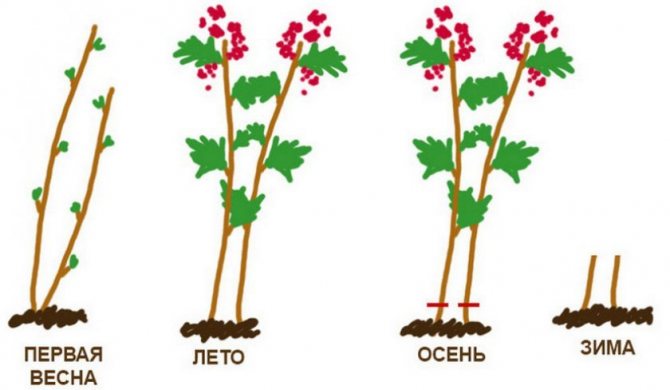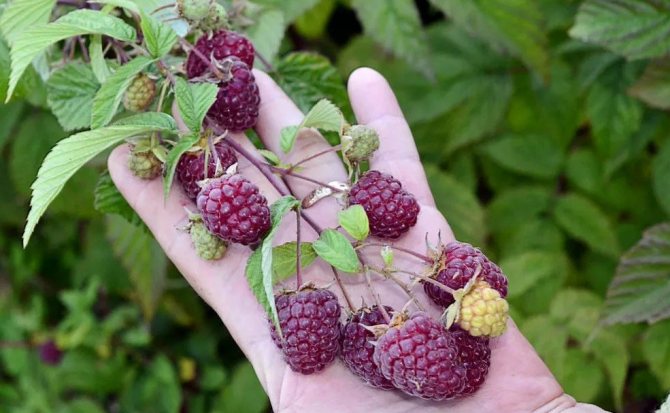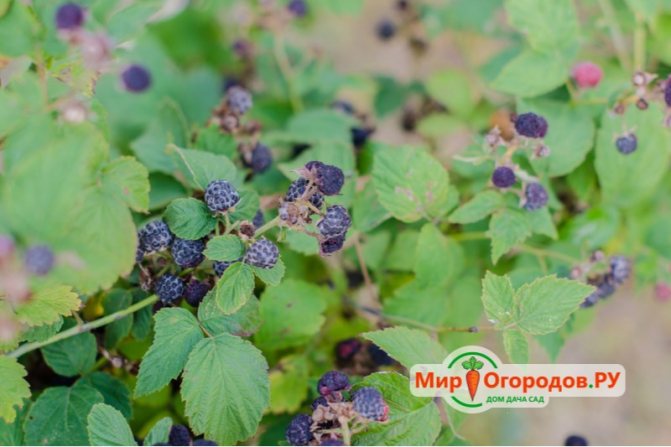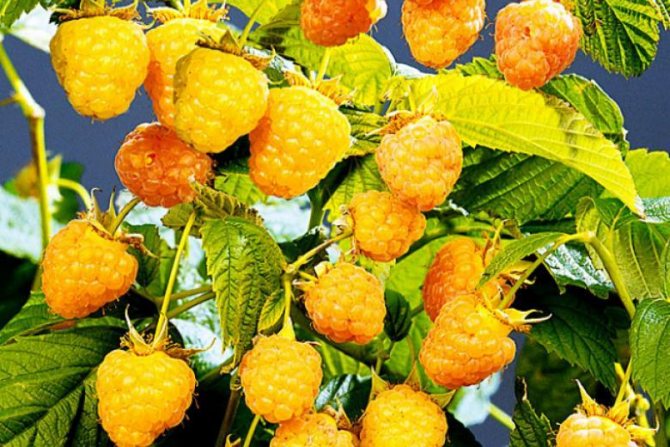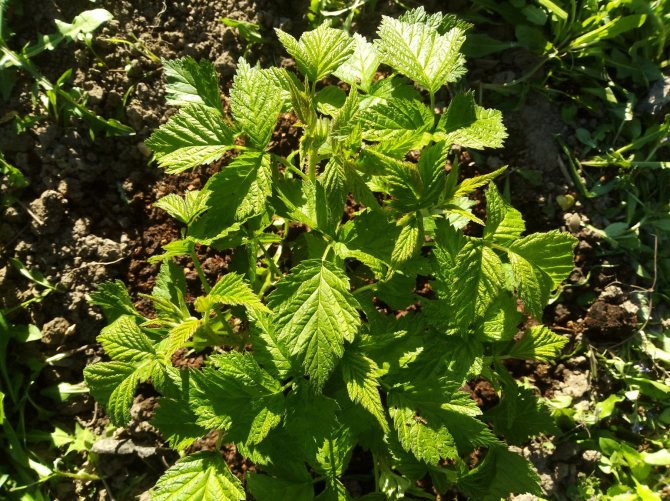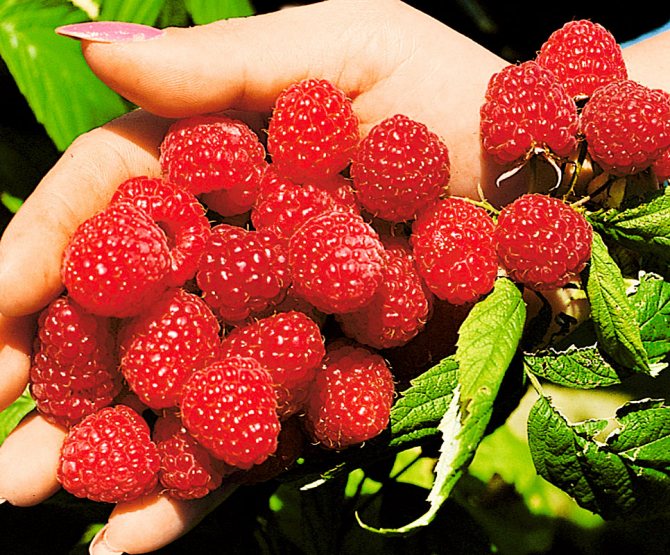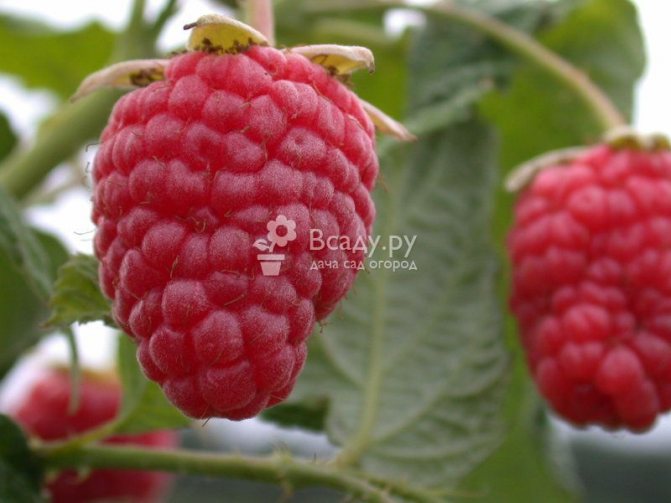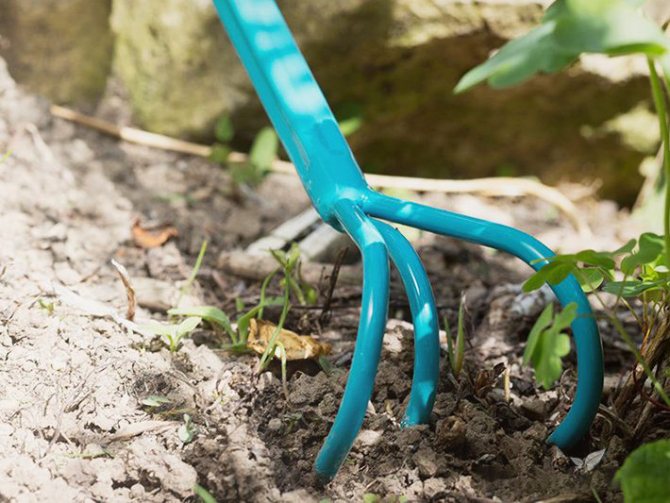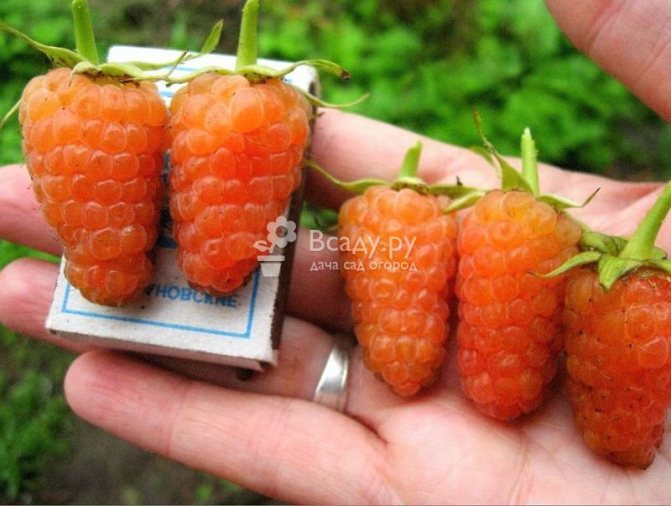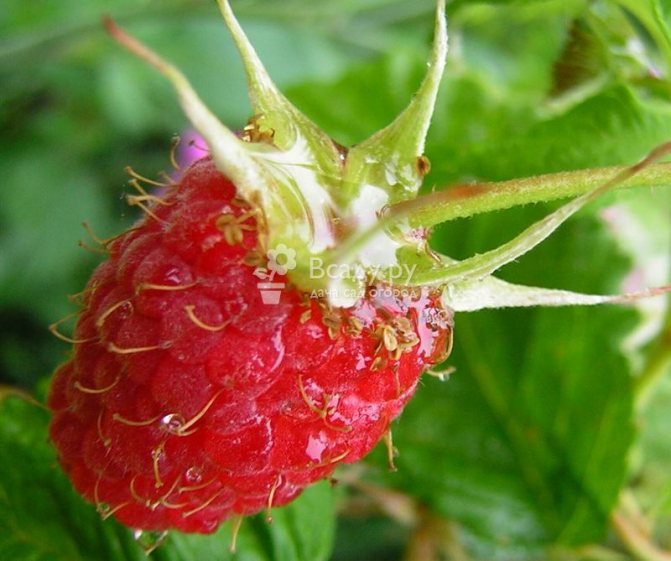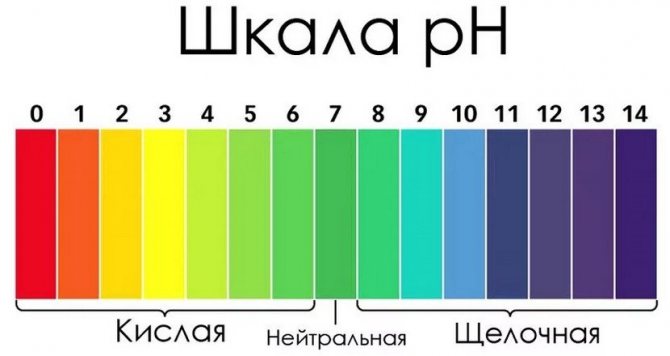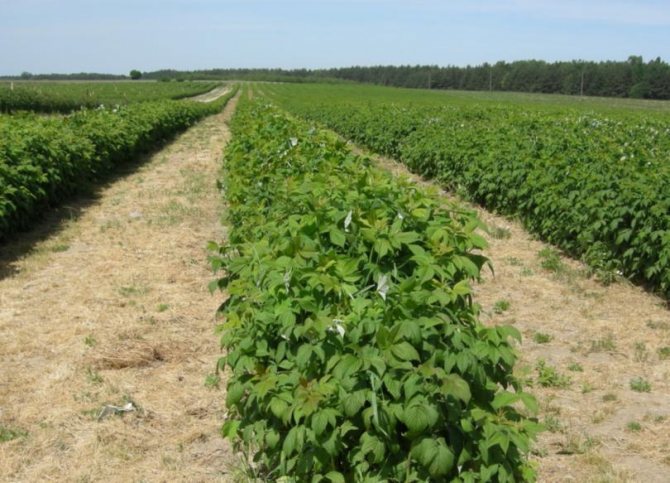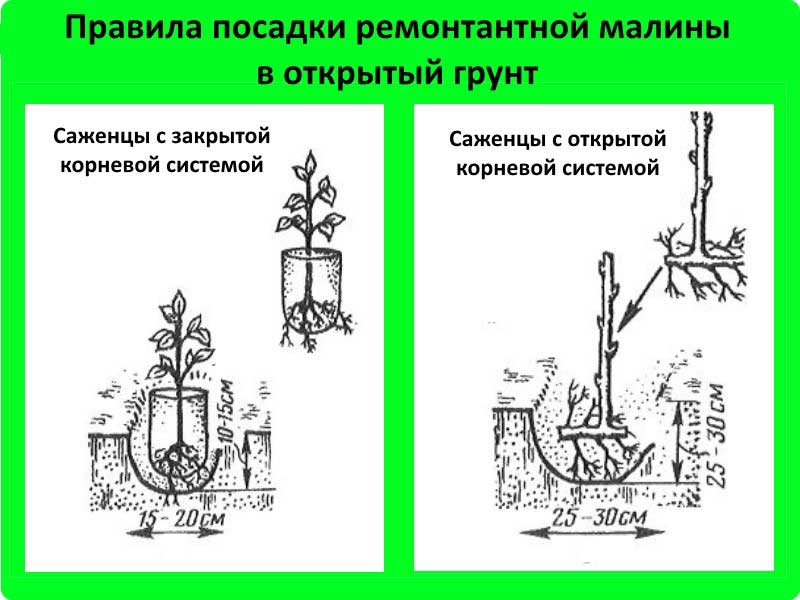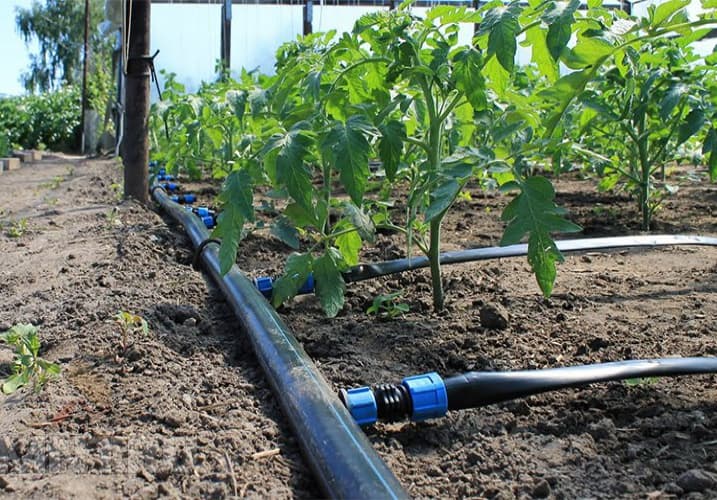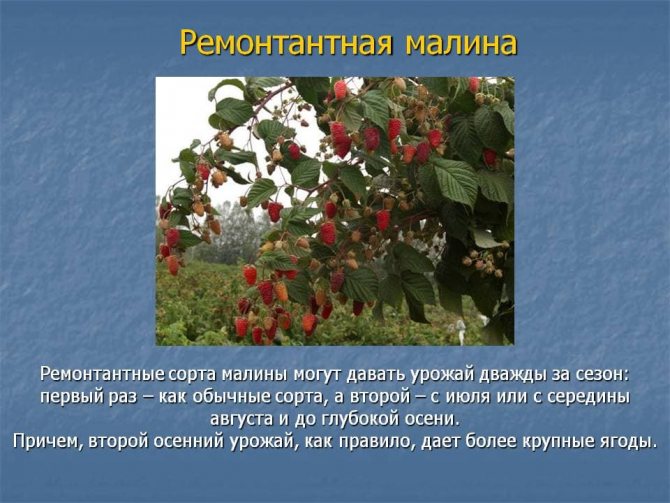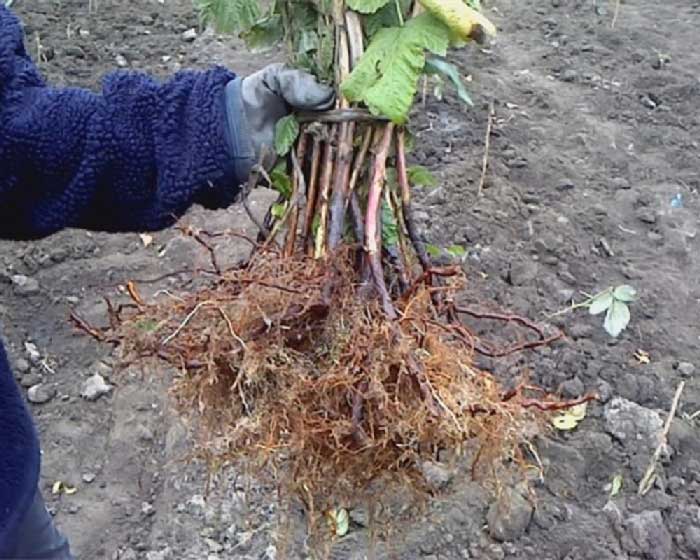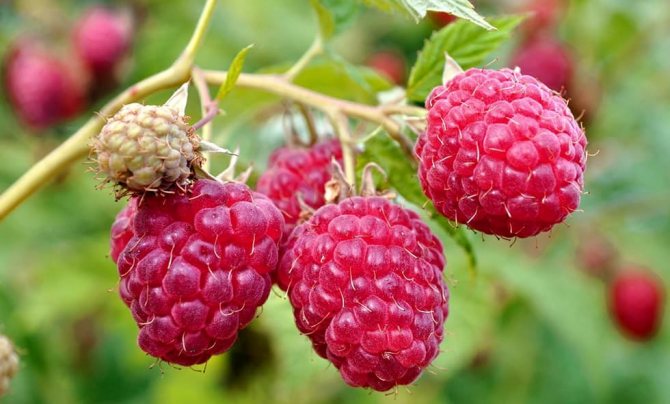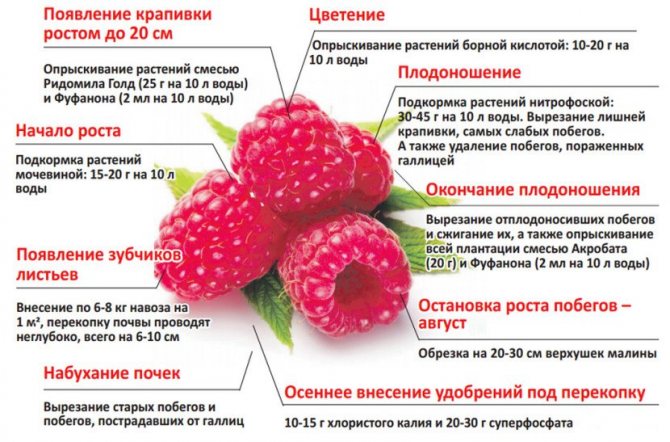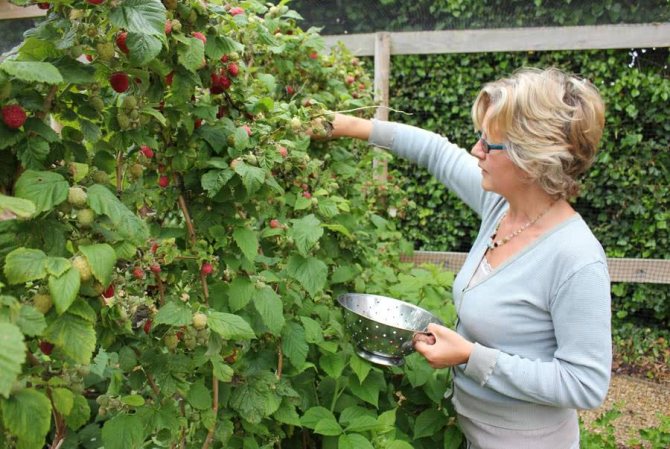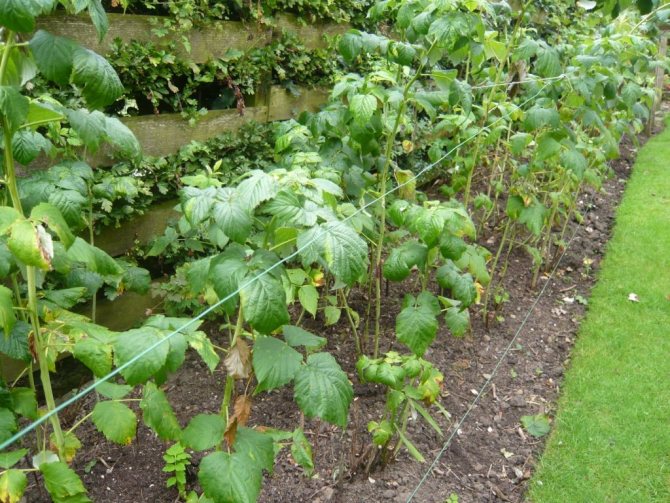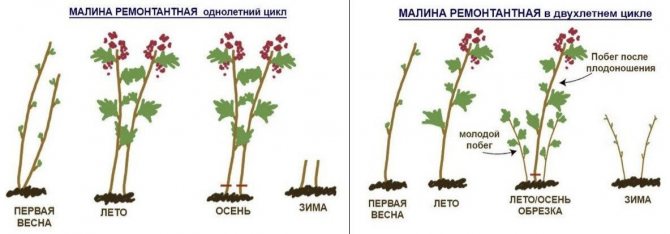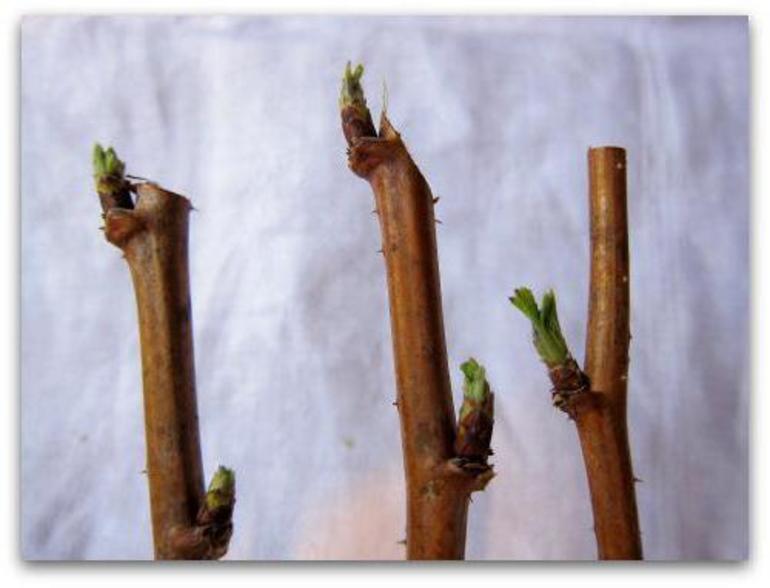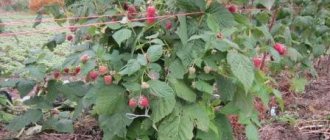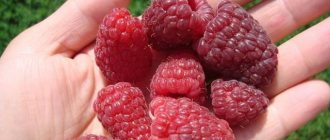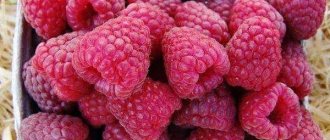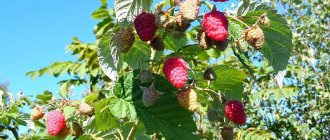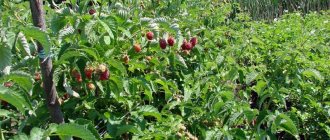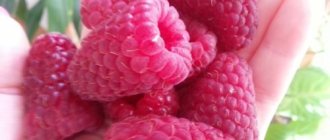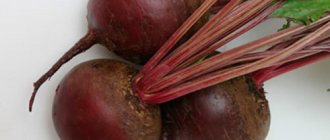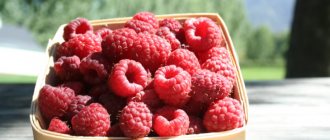There are a lot of varieties of raspberries suitable for the conditions of Central Russia. Each gardener will be able to choose both summer and remontant varieties, as well as exotic options for yellow, black, purple raspberries.
Optimally suited varieties of early and medium ripening periods, characterized by unpretentiousness to rainy, cold periods and soil fertility. It is also worth paying attention to heat resistance and frost resistance, but these indicators will not be decisive, as when choosing a variety for the Krasnodar Territory or Siberia. Resistance to diseases and pests is also not of decisive importance, because most modern varieties have good immunity, and there are more and more remedies every year.
Reviews of gardeners allow you to form a conditional portrait of a summer resident of the middle lane. Most often, this is an amateur gardener who leaves for the site only on weekends, so the varieties should be the least demanding on agricultural technology, have extended periods of fruiting, and not crumble when fully ripe. We tried to choose just such for you, but what kind of raspberry it will be: summer, remontant, standard, what color and taste - the choice is yours.
Atlant
Atlant is a highly productive remontant variety with large fruits weighing 5.0-6.0 g. Fruits are elongated, conical, dense, can hang for a long time without falling off the fruit plant and not rotting. The beginning of ripening is the second decade of August, before frost the bushes manage to give more than 70% of the harvest. Berries of universal use, sweet, juicy, fleshy. The variety is resistant to the main diseases of the raspberry tree. The bushes are medium-sized, slightly spreading with good shoot-forming ability. Thorns are rare, located mainly in the lower part of the shoots. The variety is picky about watering. With a lack of moisture, the berry immediately becomes shallow, as, incidentally, in hot weather. The variety is not suitable for cultivation in the southern regions of the country; the temperate continental climate of central Russia is ideal for it.
Detailed description of the Atlant variety
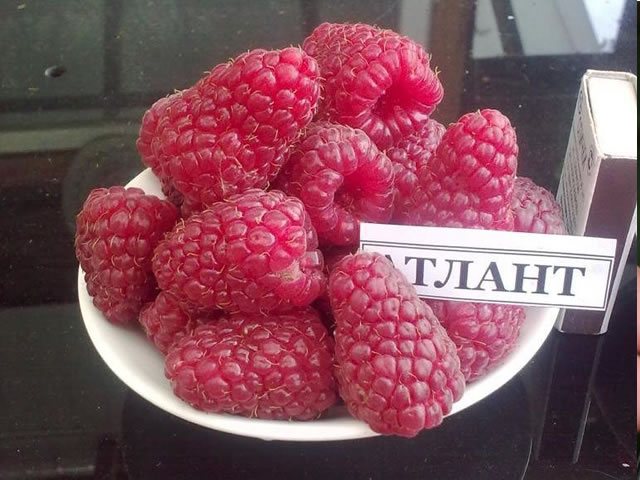
What is remontant raspberry
Every spring, the remontant raspberry grows new shoots, forming a crop by the end of summer or autumn. With the beginning of winter, the part of the shoots that has finished bearing fruit will dry out, and the rest next spring will give fruit twigs with berries, just like ordinary raspberry varieties.
It turns out that remontant varieties bear fruit twice - the first, an early harvest of raspberries, is obtained on the branches that fruited last fall, the second - on the tops of young shoots. This double fruiting greatly weakens the bush, which leads to a deterioration in quality, as well as to a decrease in the number of fruits.
Most remontant varieties of raspberries are recommended to be used for one harvest - ripened on one-year strings. Then they are cut off at ground level with the onset of frost or in early spring.
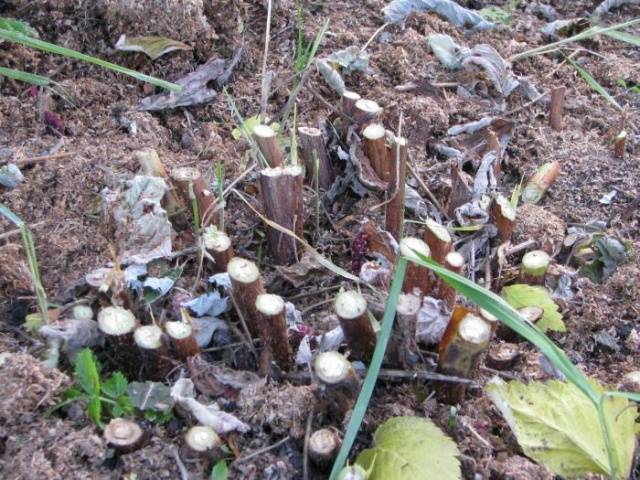

This has its advantages - the main pests and pathogens of raspberries are hiding under the bark of wintering shoots, therefore, young shoots simply will not get sick and we will not have to use chemicals. In addition, we are avoiding the problems of freezing and damping off of overgrowth of remontant varieties during the cold period.
On the other hand, last year's sprigs of remontant raspberries begin to bear fruit very early; in the south of Russia, the first berries on some varieties appear already in the first ten days of July. Thus, the fruiting of raspberries, with a skillful selection of varieties, can take almost six months, which is very attractive both for those who like to simply feast on a fragrant berry, and for people who grow this crop for sale.
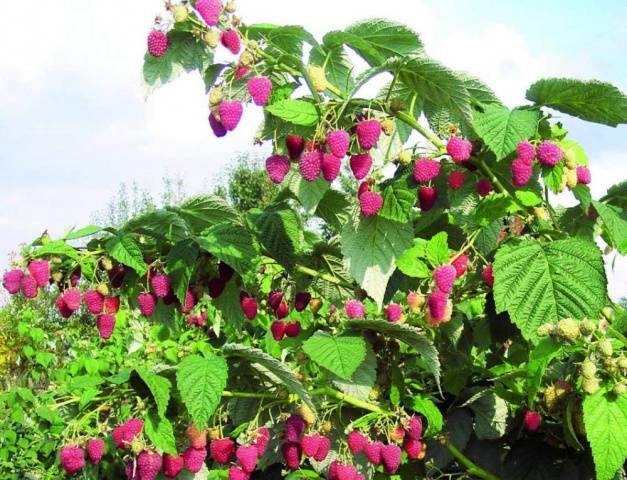

Advice! If you have little space and there is an opportunity to grow only a few bushes of raspberries on the site, give preference to remontant tall varieties and do not cut off annual shoots after harvesting.
Morning dew
Morning dew is a large-fruited variety of Polish selection of yellow raspberries. Especially appreciated for its high yield, unpretentiousness, transportability. Fruits are large (5-7 g, maximum up to 10 g), spherical, dense, dry with well-linked drupes. The taste of the berries is sweet and sour and highly dependent on the presence of moisture. In dry periods, the sweetness is lost, the berry becomes sour. Fruiting time when grown in an annual culture: from mid-August to the first frost. The bushes are powerful, consist of medium-sized shoots (1.5-1.7 m.) With hard thorns. Optimum results can be obtained when growing the variety in an annual crop, because, provided that it is cultivated like the usual garden raspberries, the first summer harvest is much more acidic than the second autumn.


Landing features
The remontant raspberry, in comparison with ordinary raspberries, has increased requirements for the level of light and soil fertility.
Site selection and preparation
A well-lit place is chosen for her, even light shading affects the yield of the crop. The site must be protected from the wind. Preference is given to the placement of seedlings on the south side, covered from the north by buildings or plantings of other shrubs.
On such a site, a microclimate is formed that is favorable for remontant raspberries:
- snow melts earlier in spring;
- the soil warms up faster;
- the intensity of the winds is lower;
- a slight first frost does not affect the plants.
Groundwater in places of growth is permissible at a depth of no more than 1 m, otherwise the roots of the plant will vytuyut. When snow melts, the area should not be flooded.
Newly planted bushes should not grow on the site of an old raspberry plantation, so as not to cause soil fatigue, or after all nightshade crops.
The crop has high soil fertility requirements: it consumes more nutrients than summer raspberries.
Land preparation for planting is carried out in advance. When planting in the fall, work begins in the spring, in extreme cases - a month before the procedure.
Note! Repaired raspberries grow well only on neutral soil, therefore, if necessary, the soil is deoxidized to a pH of 5.8-6.2.
The bush has a branched root system, so you need to fertilize the entire area of the raspberry tree. For 1 sq. m make:
- compost or humus - 2-3 buckets;
- mineral fertilizer with a full set of trace elements - 1 tbsp.;
- wood ash - 0.5 liter can.
The earth is dug to the depth of the bayonet.
On well-fertilized soil, the bush gives up to 2 m high shoots.
Planting plants
Planting of remontant raspberries is carried out in spring and autumn.
The distance between the bushes is 60 cm, between the rows - 1 m.
Maroseyka
Maroseyka is the first thornless raspberry variety bred in Russia. The bushes are medium-sized (1.5 m.), Strongly spreading, require a mandatory garter to the trellis. The berries are most often double, large, weighing 4-12 g, conical, light raspberry, aromatic and sweet. The yield from a bush can reach 4 kg. and more. Good resistance to almost all diseases.
Detailed description of the Maroseyka variety
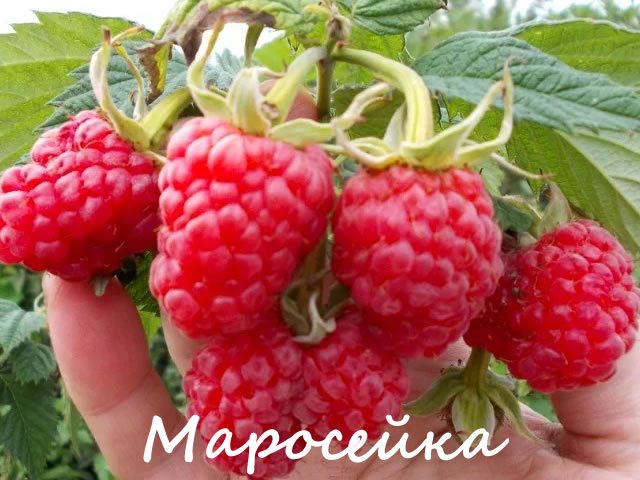

Zyugana (Shugana)
A modern Swiss variety of large tasty raspberries. The berry is red, with a noticeable shine, with an average weight of 5.4 g.The bush is of a half-stem type, powerful and can do without a garter, there are no thorns. The yield is high, up to 8-9 kg per bush. Tasting score 4.5 points.
Zyugan in Belarus, video
Zyugana's breeders declare its high frost resistance and complex resistance to the main diseases of raspberries. In Europe, the variety is grown for two harvests: June and August. In Russian conditions, both this method and harvesting only from annual shoots is possible.
Pride of Russia
The pride of Russia is one of the largest-fruited raspberry varieties bred by V.V. Kichins. The average weight of a berry is 4-12 g, some specimens reach 18 g, the shape of the fruit is conical, the drupes are small, the berries do not crumble when fully ripe, the taste is inferior to many modern varieties, for example, Patricia. The shoots are powerful, 1.5-1.8 m high, devoid of thorns. The variety is resistant to all major fungal diseases, frost resistant up to - 30 gr. The pride of Russia is subject to dissimulation - a large number of double fruits.
Detailed description of the variety Pride of Russia
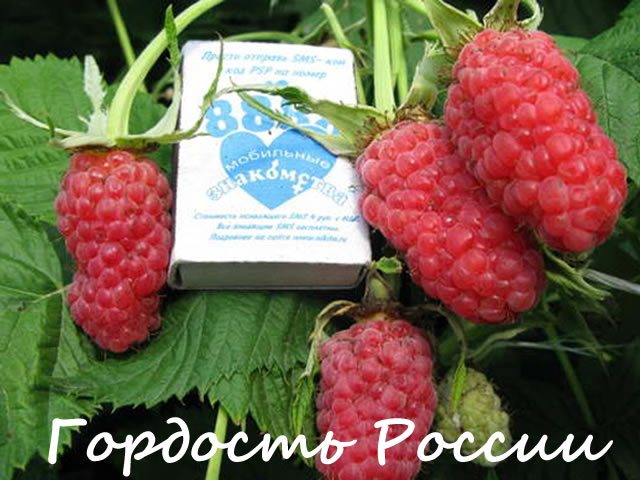

Which raspberry is suitable for central Russia?
What qualities should raspberries have so that they can be grown in central Russia? Here, only a few of the most important factors play a role - frost resistance, drought resistance, the possibility of quick survival in a new climate and a new earth in composition. All these qualities allow you to grow a crop without problems, but they rarely come across in a compartment. And yet there are such varieties.


Yield plays an important role when choosing a variety.
But what other qualities are desirable? Of course, yield plays an important role. Raspberries are sold not only in warm, southern regions, but for a large family of a simple raspberry variety for central Russia, low yields will not be enough.
The sweetness and size of the raspberries are also important. This berry should be sweet, even if it gets little sun. That is why breeders are constantly developing new varieties that give good, large berries with excellent taste, even without an abundance of sun and heat.
Galaxy
Galaxy is a raspberry of the mid-early ripening period of V.V. Kichiny. The berries are large, with a dessert taste, but with a thin drupe skin, which does not allow transporting the crop of this variety over long distances. The characteristics of the variety from brochures and from gardeners' reviews vary greatly. Productivity according to verified data 3-4 kg. from a bush, according to declared up to 18 kg. The fruits are on average 4-6 g, according to the declared: 18-20 g, but this is the size of more strawberries and photographs of raspberries of this size are not found anywhere else. Bushes of the standard type, powerful with an increased shoot-forming ability. Agrotechnics are standard, similar to other summer varieties. Some of the shoots (up to 20%) may show signs of remontant formation, forming an autumn harvest at the tops of the shoots. The disadvantage of the variety is the small number of real reviews.
Detailed description of the variety Galaxy


High-yielding varieties
An important criterion for the gardener is that raspberries should have a high berry yield.
Variety "Yellow giant" - this bush bears fruit since August. He has incredibly beautiful yellow berries, which weigh up to 8 g. During the season he can give 15 kg. delicious fruits. "Yellow giant" is resistant to frost and pests. But there is a drawback in low transportability and a large number of thorns on the bush.
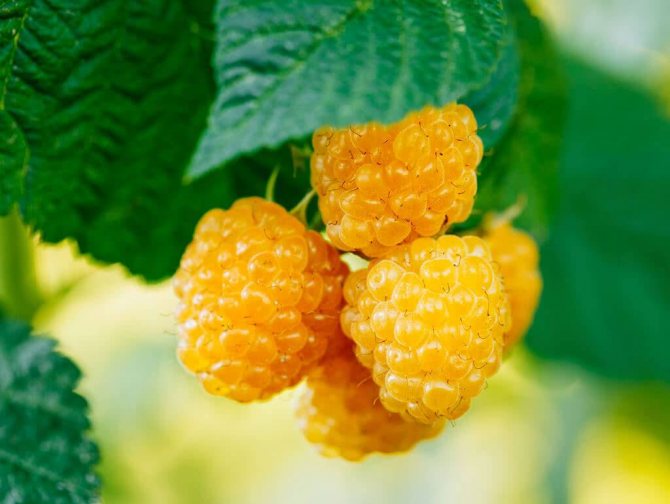

Variety Yellow giant
High-yielding varieties of remontant raspberries include "Golden Domes". The bushes are capable of giving 2 crops per season. The first appears at the end of June, the second can be harvested in August. One bush gives about 2 kg. The Zolotye Kupola variety grows on average up to one and a half meters. These are spreading shoots and, practically, without thorns. The berries weigh up to 6g, their shape is round with a bright yellow color. These berries taste sweet and sour with a delicate raspberry aroma.
One of the most productive varieties with large berries and large ripening varieties is "Lyashka". These raspberry bushes bear fruit for a very long time. In mid-June, the first harvest is already possible. The berries are suitable for both home and industrial cultivation.
Indian summer
Indian summer is a proven variety of remontant raspberries. The berries are not very large, not the sweetest, the yield is low, but the variety is stable and has taken root in many garden plots. Fruiting begins in mid-August and lasts until frost. The assortment has a continuation of selection in the form of the Babie Leto-2 variety, which is sweeter, more productive, large-fruited, but also inferior in these indicators to many modern varieties. As an example, they often put the varieties Polka, Firebird, Orange Miracle, Joan Gee, to which Indian Summer-2 is inferior in a number of characteristics.
Detailed description of the variety Indian Summer
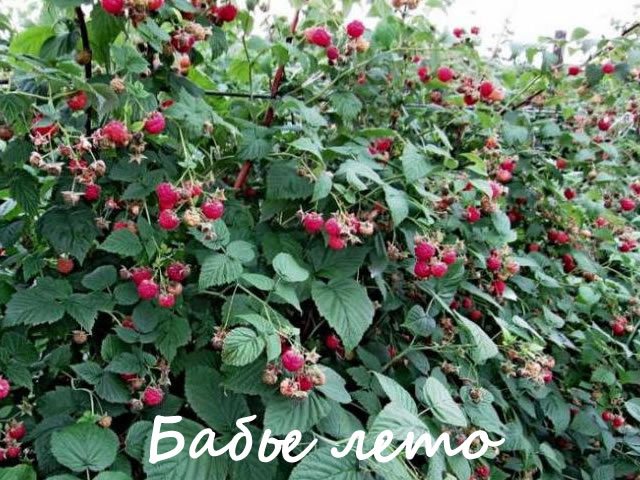

Features of the cultivation of raspberries in the southern regions
The parental forms of modern raspberries originate from northern latitudes. This is the reason that this culture is more frost-resistant than drought-resistant. She easily adapts to low temperatures, and a long spring and a short cool summer for raspberries is what you need.
The specifics of growing remontant raspberries in the south of Russia, in particular, in the Kuban, are due to the peculiarities of the climate, namely in the early hot spring. After the end of winter, the temperature rises rapidly and often reaches 25-30 degrees by the end of April. This is accompanied by winters with little snow with frequent thaws and drying winds that take moisture from the soil, which often lacks protective snow cover.
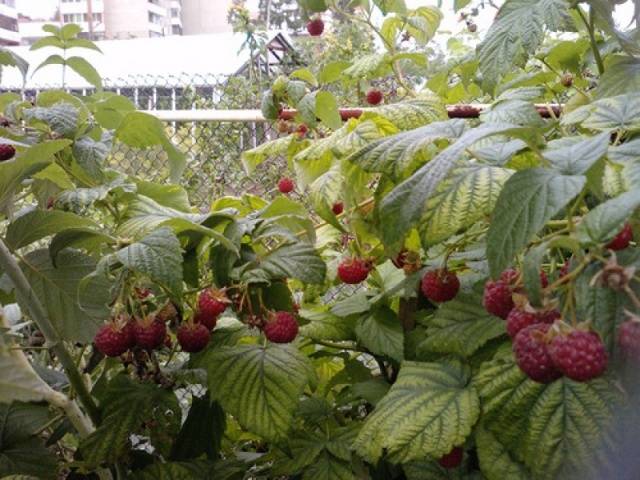

Numerous studies have shown that the main problem in growing raspberries in the southern regions is the drying of the shoots, which sharply increases towards the end of winter. At this time, the plant is still dormant, the dry wind picks up moisture from last year's stems, as well as the topsoil, where most of the raspberry roots lie. Although its root system is well branched, it lies mainly at a depth of 30-40 cm.
This determines the requirements for the placement of plantings of raspberries in the southern regions:
- Raspberry plantings should be well protected from the wind. They are best planted in areas surrounded by forests, in the steppe - under the protection of forest belts or gardens. In the North Caucasus, it is good to plant raspberries on the northern and western mountain slopes.
- Although raspberries are not as demanding on watering as black currants and do not like stagnant water at the roots, the first condition for their successful cultivation is a sufficient amount of moisture in the soil throughout the growing season. In the southern regions, at high temperatures, this culture can be called extremely demanding for irrigation, where raspberries will feel best in gullies or river valleys. In the North Caucasus, in the mountainous regions, more precipitation falls, industrial plantations or raspberry plots without artificial irrigation should be laid there.
- In the southern regions, plants receive a lot of ultraviolet radiation, while raspberries, a native of the north and in the North Caucasus, tolerate shading well. She feels good in the shade of trees, between outbuildings, in the shade of a house and will be content with a small amount of sunlight. In the sun, raspberry leaves turn yellow ahead of time, and the berries can "cook" without reaching marketable ripeness.
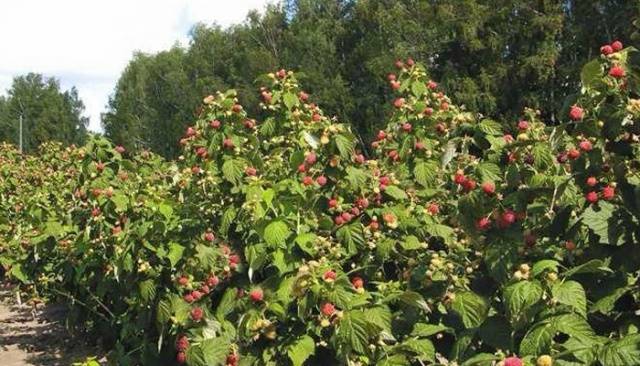

Based on the foregoing, novice gardeners can visit the ingenious idea to place a raspberry plant in the aisles of the garden. Do not do that! Raspberries are capable of producing many root suckers and will quickly clog the garden. At the same time, it can run wild, and it will be difficult to fight overgrowth without disturbing the root system of fruit trees.The harvest of a wild raspberry will be laughable, but it will draw nutrients from the top layer of the soil and even complicate planned treatments from diseases and pests, as well as harvesting.
In the southern regions, planting raspberries should be done in the fall, best of all after the end of Indian summer. Even the most resistant varieties will not have time to take root if the temperature rises rapidly in spring - neither frequent watering nor stimulant treatment will help. As a rule, at high temperatures, spring plantings do not survive until summer.
Important! To summarize: in the southern regions, raspberries need a place protected from wind and excess sunlight (shaded), frequent abundant watering.
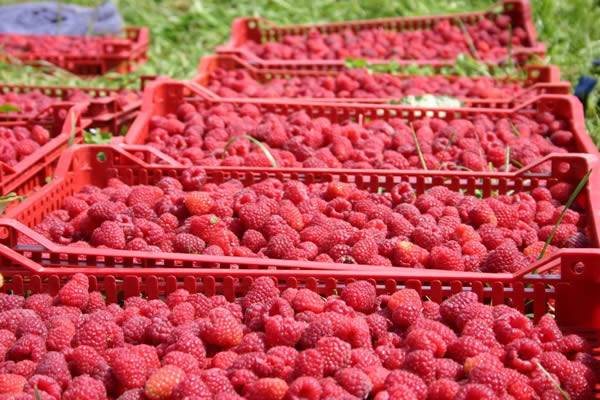

Abundant
Abundant is a very fruitful summer raspberry variety, but many speak negatively about its taste and transportability. In addition, the variety has a tendency to baking in the sun, therefore Izobilnaya is not suitable for the South of Russia and is cultivated mainly in the middle lane. The bushes are very powerful, without pruning they can reach a height of 3 m and more. Laterals are long, grow up to 40-50 cm. Requires bending for the winter, without proper shelter it can freeze even at a temperature of -25 gr.
Detailed description of the Izobilnaya variety
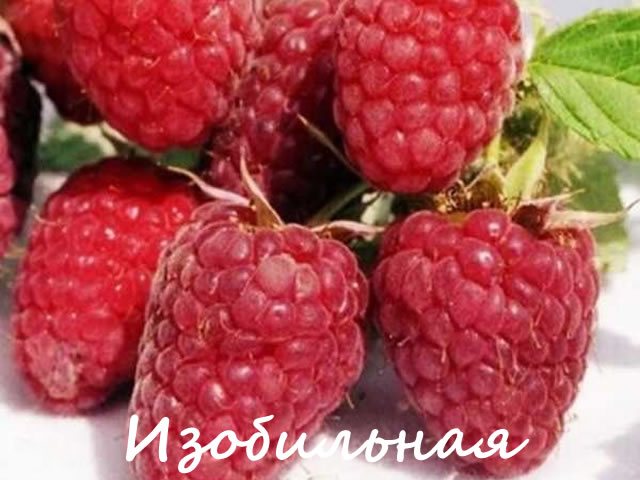

Early varieties
Most often, the ripening period of berries on remontant raspberries begins from the end of July and goes to the beginning of August. It can bear fruit until the first frost. Early ripe raspberries are beneficial to grow in cold climates. But before purchasing, it is necessary to clarify that the plants tolerate low temperatures well.
The earliest varieties of remontant raspberries are:
- "Hercules" is a shrub with a very large berry and a good degree of adaptability to cold climates. The height can reach over 1.9 meters. But there is one drawback - it has very large dimensions. Therefore, when planting such a bush, you need to immediately allocate a large area to it. There are few shoots, but they all go strictly vertically. Thanks to this, the plant can be easily processed. One bush can be harvested 2.5 kg. berries. The big advantage of this variety is resistance to fungal diseases and good transportability of the berries. In addition, the berries of this variety are very tasty.
- "Red Guard" is a variety that has been popular for a very long time. The berries are large in size and have a pleasant taste. Bushes grow no more than one and a half meters in height. Harvest from one bush - up to 3 kg.
- The earliest variety of remontant raspberries is considered to be "Augustine". With proper care, the first harvest can be obtained already on June 10. And from August 10 to the end of October, a second crop can already be harvested. The yield of one bush is 5 kg.
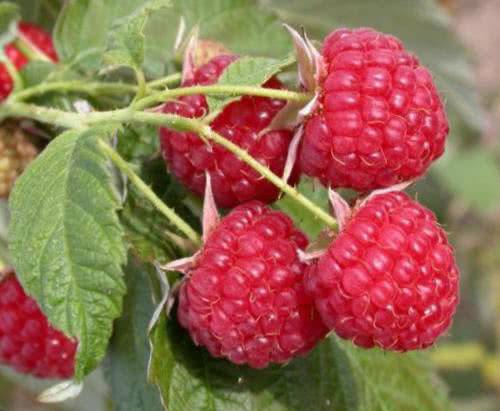

Augustine variety
When buying remontant bushes, it is important to clarify what temperature they withstand in order to warm them up for the winter if necessary. Fruiting time will vary by region. If in the southern regions such berries begin to appear already earlier than June, then in the middle and northern regions - July-August.
Brilliant
Brilliant is a thornless, strongly branching variety of raspberries with low stems (up to 1.5 m), outwardly similar to currants. The berries have an excellent presentation, but have a mediocre taste and are practically devoid of aroma. Forms little root cuttings, does not "creep" over the site, but reproduces poorly. It bakes heavily in hot sunny weather, the drupes are poorly adhered and fall apart during collection, with timely watering this deficiency is leveled.
Detailed description of the variety Brilliant


Heritage
A time-tested variety of American selection, it is recommended for cultivation in the Central region of Russia. On annual shoots, the berries begin to ripen by the end of August, on two-year-olds - from June. The bush is medium spreading, high, up to 1.5–2 meters, its garter is desirable. Shoot-forming ability is moderate. The thorns are small.The average weight of a rounded-conical berry is 3.5 g. The color of ripe raspberries is maroon, sweet-sour taste, with aroma. Assessment of tasters 4.5 points. Transportability is good.
Malina Heritage in the nursery, video
The variety tolerates frosts well in the middle zone and requires intensive watering in dry years.
Nivot
Nivot is a remontant variety of black-fruited raspberry bred in the USA. The bushes are powerful, of medium height (about 1.7 m), ringed. The berries are round, weighing 3.0-3.5 g, black with a bluish bloom, fragrant. The variety does not produce overgrowth, it multiplies, like blackberries, by rooting the tops. In terms of ripening - medium early, it manages to give almost the entire crop before frost. The yield is high. A garter to the trellis is required.
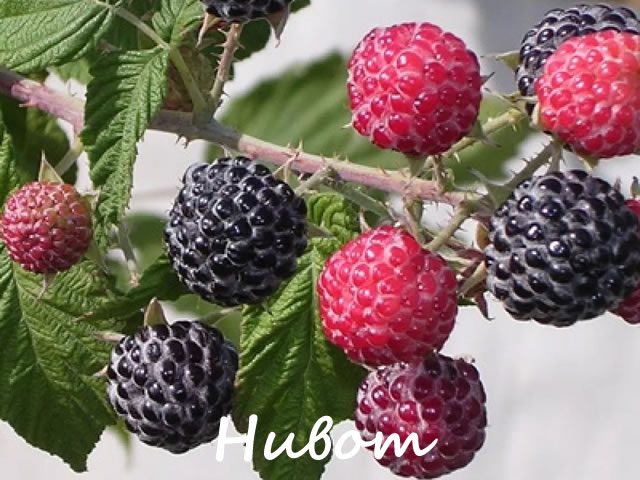

How does remontant raspberry differ from ordinary
Naturally, the main difference is that ordinary raspberries bear fruit at a two-year growth, and remontant varieties give two yields - one on last year's branches, the second, stretched out in terms of ripening until late autumn, on the upper part of spring shoots. But the differences don't end there.
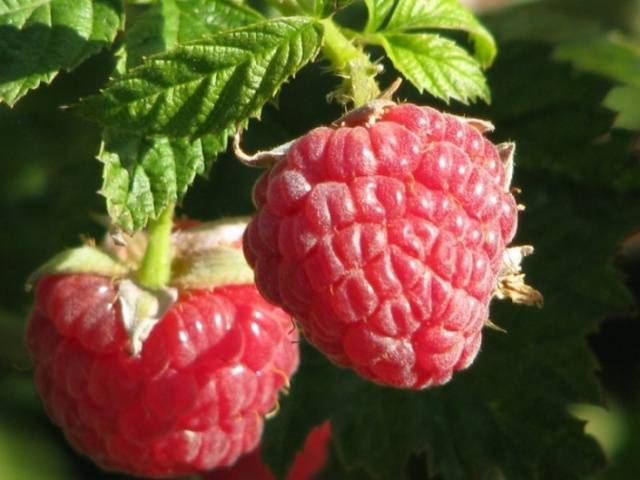

It is very easy to propagate ordinary raspberries - you plant a couple of bushes on the site and thanks to the abundant growth after a few years, you satisfy not only your own need for planting material, but also actively distribute “extra” plants to your friends and neighbors. Not that remontant raspberry. Most varieties give very little root growth, sometimes it is barely enough to replace dying two-year-old shoots. This makes it very difficult for her to reproduce.
Common raspberries have many pests and are often sick. It is almost impossible to get a full harvest without chemical treatments. As we noted above, the larvae of raspberry pests and spores of harmful bacteria hibernate under the bark of old shoots. To fight them, considerable financial and labor costs are needed, and after many treatments, the berries can no longer be called environmentally friendly.


If remontant raspberries are grown in an annual culture, then you can simply forget about most diseases, and worry about pests only as they appear. After all, the most dangerous of them had nowhere to spend the winter, and if there are no plantings of ordinary raspberries nearby, it is quite possible that pests will bypass your site. Those insects that hibernate in the ground and do not move away together with the shoots that have finished fruiting are not able to adapt to the stages of development of remontant varieties.
Important! Repaired varieties are more demanding in terms of care, in particular, to watering and feeding.
Glen Coe
Glen Coe is a dark purple raspberry variety that is often ranked alongside the black chokeberry varieties. The bushes are devoid of thorns, medium spreading, do not form shoots, do not "spread over the site." Berries of medium size, spherical, dark purple with a waxy bloom (inside dark ruby), devoid of the characteristic raspberry aroma, but tasty and sweet. When feeding with potassium-magnesium complexes, the taste of the berries improves significantly, the size increases. Winter hardiness is high, multiplies by rooting the tops. Refers to ordinary summer varieties, does not show signs of remontance. Laterals and "fruits" are long, double pruning according to Sobolev is not carried out, otherwise the bush will be unnecessarily thickened.
Detailed description of the Glen Coe variety
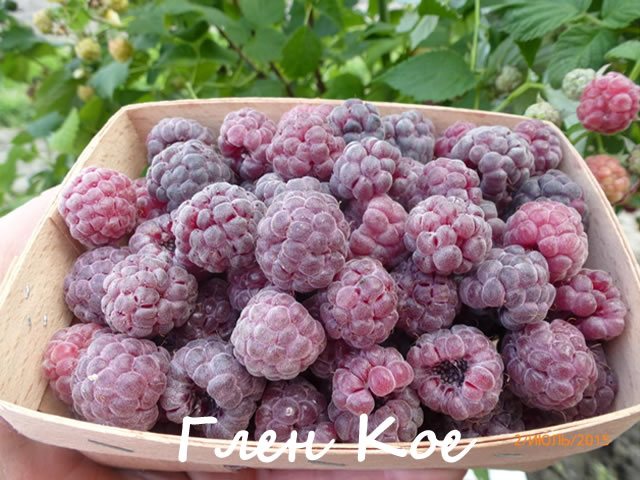

And what are we going to plant?
A large number of good varieties of remontant raspberries can make it difficult for a novice gardener to choose a variety for himself.
Let's try to help him by asking a few simple questions:
- For what purpose will raspberries be planted: only for themselves or for sale too?
- Is the place of the proposed planting of raspberries limited?
- How regular will be raspberry care?
- Is the presence or absence of thorns on the stems essential?
- And, finally, in which region the gardener lives.
The final choice in favor of this or that variety depends on the answers to these questions.
Have a good presentation, transportability, productivity and a sufficient number of replacement shoots for breeding raspberries, such varieties as Brusvyana, Zyugana, Polana, Shelf, Ruby necklace, Heritage... Growing this raspberry for sale can replenish the family budget.
Poorly stored and transportable tasty Golden domes, Orange miracle, Indian summer.
Raspberry varieties Eurasia or Penguin - low bushes of the standard type with a small shoot-forming ability. They will not take up much space and will not actively creep over the site.
Unpretentious variety in care Herculesslightly more demanding Polana... And here Shelf, Brusvyana, Zyugana, Heritage will require increased attention, in particular, regular watering.
There are no thorns in varieties Zyugan and Polka, small y Bows to Kazakov, Polana and Heriteij... But at Indian summer, Hercules, Eurasia and Ruby necklace the thorns are large.
Many domestic varieties of remontant raspberries are recommended for all regions of the country with crops grown only on annual shoots. it Bryansk miracle, Eurasia, Orange miracle, Bow to Kazakov, Ruby necklace. This also includes the variety Hercules.
Indian summer recommended for the North-West, North-Caucasian and Central regions with cultivation in both a two-year and one-year cycle.
One-year cycle - growing remontant raspberries only on one-year shoots with cutting off the entire aerial part of the plant in autumn. In a two-year cycle, only two-year shoots are cut off in autumn. Raspberries for the next year yield a harvest on the shoots of the current year and last year.
Polish varieties Shelf and Polana, Ukrainian Brusvyan more suitable for those of our regions where the climate is similar to their homeland, namely the South-West, the south of Siberia and the Urals, Central Russia. Similar requirements for climate and varieties Zyugana and Heritage, they have good frost resistance.
Very often, remontant varieties of raspberries do not have time to give up the entire crop before the onset of cold weather, and it looks good here Eurasiaending fruiting in September. She, however, has a low tasting score and an average disease resistance.
It should be noted that the varieties of yellow raspberries Orange Miracle and Golden Domes are hypoallergenic - they can easily be enjoyed by people suffering from allergic diseases.
Bristol
Bristol is a proven variety of large-fruited black raspberries. The bushes are compact, erect, covered with a large number of thorns. The berries are larger than Cumberland (3-4 g), spherical, black. The drupes are well adhered, the berries are easily removed from the stalk, do not crumble or wrinkle when picking. The taste is sweet with a blackberry aroma. Ripening of berries is amicable, again, when compared with Cumberland, the fruiting period is much shorter. Fruits for universal use, good for fresh consumption, processing and freezing.
Detailed description of the variety Bristol
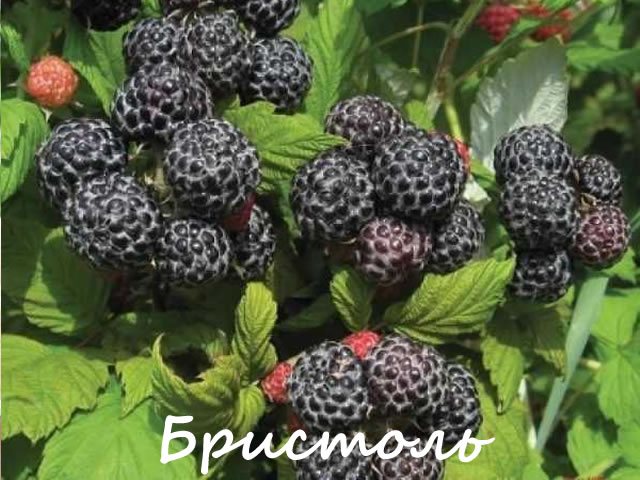

Propagate by layering, cuttings, dividing the bush
| Root layers
|
| Cuttings
|
| By dividing the bush
|
Zeva
Zeva is a productive remontant variety originally from Switzerland. Berries of medium size (about 3 g), bright red, round, sweet and sour, aromatic. Tasting score 4.1 points out of 5.0 possible. The fruits are even, beautiful, do not crumble for a long time even when fully ripe. Fruiting dates: from the first decade of August to the first frost. Bushes are medium-sized (1.5-2.0), medium studded. Shoots are erect, forming a crop along their entire length. Winter hardiness and drought resistance are high. Shoot-forming ability is high. The variety is easy to breed, but without timely maintenance, it can creep over the area. A distinctive feature of the Zeva is the peculiar consistency of the fruit. The berries are slightly stringy and stick a little to the teeth when consumed.


Description of the best varieties of raspberries
Let's start by describing new and old species. The easiest way to grow a regular garden raspberry. It bears crops on different soils, is frost-resistant, multiplies easily, ripens at different times. The yield is average. The best varieties include: "Malakhovka", "Early Sweet", "News of Kuzmina", "Whim of the Gods", "Hussar", "Glen Prosen".
Large-fruited raspberries are distinguished by abundant yields and fruit size, some giants reach 20 grams.
The main enemy of large-fruited raspberries is drought. If the plants do not receive enough moisture for development, the crop dries up on the branches. Winter hardiness is low, frost -20 leads to complete or partial freezing. Popular types: "Beauty of Russia", "Pride of Russia", "Mirage", "Maroseyka", "Aboriginal", "Balsam", "Meteor", "Orbit".
Repaired raspberries yield twice a season. Not picky about the composition of the soil. Fruit ripening begins in the middle of summer and lasts until frost. Common varieties: Brusvyana, Yellow Giant, Bryansk Marvel, Polka, Morning Rossa, Brilliant, Hercules, Monomakh's Hat.
The standard raspberry appeared on personal plots recently and immediately became a favorite of gardeners. The plant is 2 meters high, but support and extensive pruning are excluded. The species is resistant to diseases and parasites. The most promising ones include: "Strong", "Fairy Tale", "Galaxy", "Tarusa", "Giant", "Bogatyr", "Penguin", "Glen Ampl".


Raspberry sturdy - one of the best standard varieties
Repaired varieties
Repaired raspberries have a distinctive feature - repeated fruiting. And some modern types are able to delight with fragrant fruits all season. Fruit ripening begins in mid-summer and ends in September - October.
The autumn berry is larger and more aromatic. Knowing this ability, some gardeners mow plants at the root in the spring. Young shoots that have grown over the summer give a bountiful harvest.
A brief description of:
- Brusvyana is an invention of our biologists. The bush is highly branched and high (up to 2 meters). The shoots are straight, there are few thorns, it is convenient to harvest. Brusvyana of a classic raspberry color and taste with a decent weight (up to 12 grams). The shoots are completely covered with fruits.
Agrotechnics:
- loves sunny, sheltered from the wind areas;
- regular loosening of the soil;
- regular feeding;
- needs protection from sores and parasites;
- bend down for wintering.
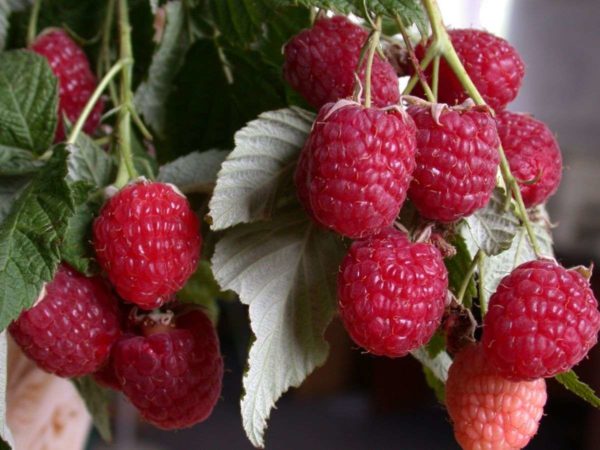

Raspberry brusvyana loves sunny beds
- The Yellow Giant. Harvest - 6 kilograms per plant. The fruits do not crumble, they tolerate transportation well. Plant height exceeds 2 meters, participates in the decoration of pavilions and alleys. The giant has frost resistance and resistance to sores. A good choice for allergy sufferers and young children. The giant yellow color does not cause allergic reactions.
Agricultural practices include regular watering and fertilization, post-harvest pruning at ground level, and mulching.


The yellow giant is great for allergy sufferers
- "Bryansk Marvel".Ripens in mid-August, harvesting continues until frost. Divo has a bright red color and an elongated conical shape, an average weight of 6-11 grams. Collection from a bush 4 kg. The fruits are sweet and sour.
Growing specificity:
- the plant loves sunny areas and does not tolerate waterlogging of the soil, its roots rot;
- needs loose soil, regular feeding with humus or manure;
- in July, add 0.5 liters of ash under each bush to increase yields;
- to enlarge the berries, remove the lower branches with buds before flowering.
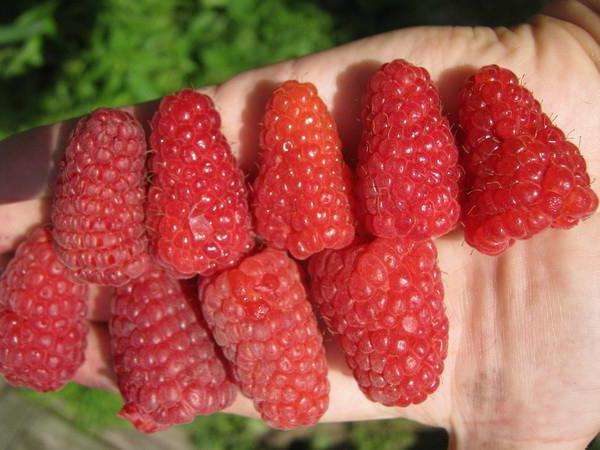

The Bryanskoe Divo variety ripens in mid-August
- "Diamond". The plant is not tall 140 centimeters. There are no spikes on the trunk. The size of the berry is 6 grams. With proper care, 8 kilograms of berries are harvested from one bush. Transferring transportation and storage. With constant observance of the temperature regime in the limit of 5 degrees Celsius, the presentation is not lost for several months.
Agrotechnics:
- plant in sunny areas, without covering the root collar with soil;
- bears fruit without problems on black soil, and clay soil needs to be fertilized regularly;
- requires a garter.
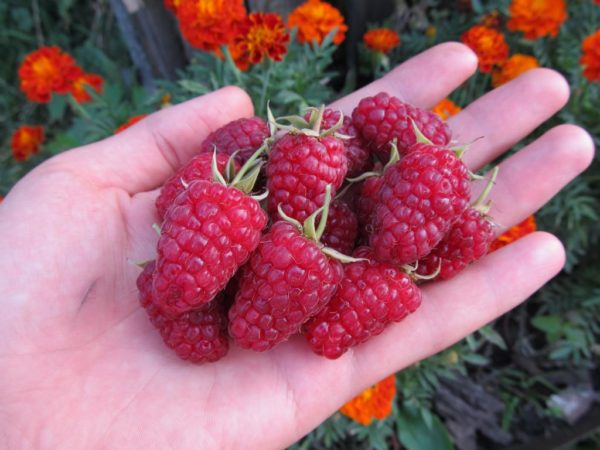

Diamond raspberries must be tied up
- "Polka". Late species popular among gardeners. The yield is increased. Fruiting begins in mid-summer and does not stop until frost. A good option for industrial cultivation and for private farms. Fruits weighing up to 12 grams. The color is magenta. Pronounced aroma and taste. The plant is not susceptible to sores and parasites... Fruits do not undergo cracking for a long time, they are well preserved and transported.
Agrotechnics:
- plant in sunny areas;
- the composition of the soil is not important, the main thing is top dressing;
- needs loosening and pruning.
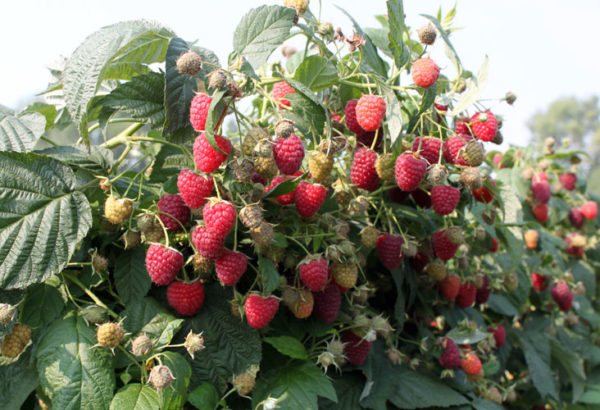

Raspberry polka bushes begin to bear fruit by the middle of summer
- "Hercules". Not picky about care, frost-resistant, not subject to diseases and pest attacks. The berries are ruby in color and have a sweet and sour taste. Fruit weight 6-10 grams, they are well stored and transported.
- "Cap of Monomakh". The plant looks like a small tree 1.5 meters high. Powerful, branched, low-thorn shoots droop down a little. The fruits are deep red in color, the average weight is 7 grams. Subject to the rules of agricultural technology, there are real giants of 20 grams. Productivity from one bush is on average 5 kg, sometimes 8 kg. Fruits are blunt-conical, slightly elongated, easily removable. The taste is sweet, with a subtle sourness.
Growing rules:
- regular watering and feeding;
- thinning root layers;
- removal of excess ovary;
- requires protection from viruses and diseases;
- autumn pruning at soil level, followed by fertilization with ash and humus.
Observing the correct frequency and abundance of watering, it is possible to get large and juicy berries.


Raspberry Monomakh's hat is large
The best varieties of large-fruited raspberries
Large-fruited raspberries are characterized by large sizes (up to 20g) of fruits. The bush forms many fruit branches, therefore the yield is much higher than that of ordinary raspberries. Up to 40 berries are laid on each fruit branch. Has excellent taste. The disadvantages include the formation of a meager number of replacement shoots. It will not be possible to multiply quickly, which means that when laying a raspberry tree, it is better to buy all the required amount of planting material at once.
Characteristics of the main types:
- "Beauty of Russia". Average winter hardiness, does not freeze at 30 degrees, in cold regions it is necessary to bend down under the snow cover. Excellent resistance to sores and pests. It is a powerful, spreading, medium-sized plant from 1.5 to 2 meters in height. The berries are dark red, dense, elongated-conical, sweet with a raspberry aroma. Easily break off from the stalk. They tolerate transportation well. Average weight 8-12 grams, yield per bush up to 5 kg. Grows well in the south.
- "Pride of Russia". High-yielding, early maturing, self-fertile variety. Fruits are red, velvety, weighing up to 12 grams, juicy, sweet and sour with a raspberry aroma. Poorly tolerated transportation and storage. Productivity 4.5 kg per bush. Differs in high drought and frost resistance (up to -30). The plant is resistant to all diseases.
- "Mirage". It is a medium late variety with increased frost resistance, an ideal choice for central Russia. The berries are red, large, slightly elongated with a pleasant aroma. When fully ripe, they do not crumble. Productivity per bush 4.5 kg.
- "Maroseyka". Medium ripening, thornless and delicious raspberry aroma. The berry is light red, elongated, with an average weight of 4 to 12 grams. Productivity from a bush is 4-6 kilograms. Due to its dense pulp, it tolerates transportation well. Among the disadvantages are low winter hardiness and drought resistance.
- "Aboriginal". Large-fruited variety (5-8gr) of early ripening. The berries are light red, dense, conical in shape, do not crumble after full ripening, easily separated from the stalk. The yield per bush is 5 kg.
The main enemy of large-fruited raspberries is drought. If the plants do not receive enough moisture for development, the crop may die.
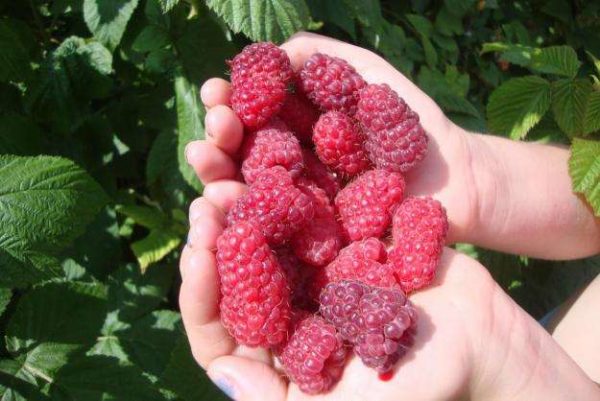

Large fruits of raspberry the beauty of Russia
Berry for central Russia
The middle zone of Russia is characterized by hot summers and severe winters. All kinds of aromatic berries grow in this region. But still, the following seem to be optimal:
- "Bryansk Marvel". This aromatic, sweet berry is specially bred for the middle band.
- Atlant. Possesses increased winter hardiness and duration of fruiting.
- "Kuzmin's News". Large sweet berries. The yield is average. Winter hardiness is high.
- "Early surprise". A very early variety with beautiful ruby, sweet fruits.
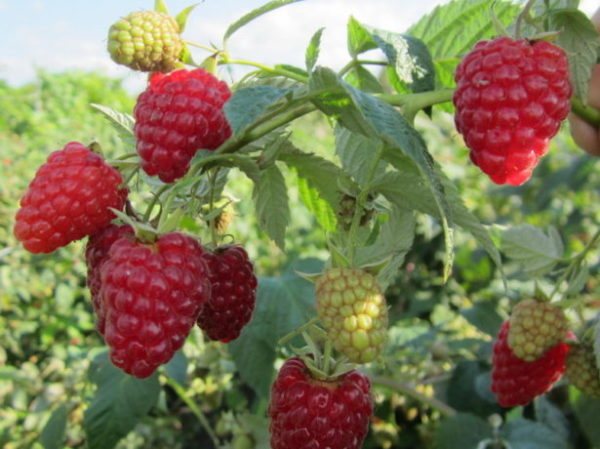

Raspberry early surprise is early maturing
Types of raspberries for the Moscow region
The districts of the Moscow region are distinguished by early frosts; therefore, remontant varieties with increased winter hardiness will be the best option. In this region, fruit well:
- "Diamond". Thornless raspberry with large sweet fruits.
- "Polka". The berry is oblong, highly aromatic and sweet.
- "Yantarnaya Sadko". Yellow-fruited large, sweet raspberry. Ripening period - August.
- "Hussar". Unpretentious, high-yielding, winter-hardy species. The berries are large, sweet, dark ruby color.


Large yellow raspberry - Amber Sadko
Varieties for Siberia with a large harvest
The following varieties are characteristic for Siberia and the Urals:
- "Orange miracle". Large berries from 8 to 10 grams, yellow in color and pleasant aroma. Transport well. Fruiting lasts all summer.
- "Bryansk Marvel". Resistant to diseases, average winter hardiness. The berries are red, elongated, heavy, 9-11 grams.
- "Tarusa". Standard variety with medium frost resistance, needs shelter. Red berries with a strong raspberry flavor and weighing from 10 to 13 grams.
- Octavia. Appetizing fruits of bright red color. They do not crumble after prolonged rains. Productivity is about 5 kilograms per bush. Winter hardiness is excellent.
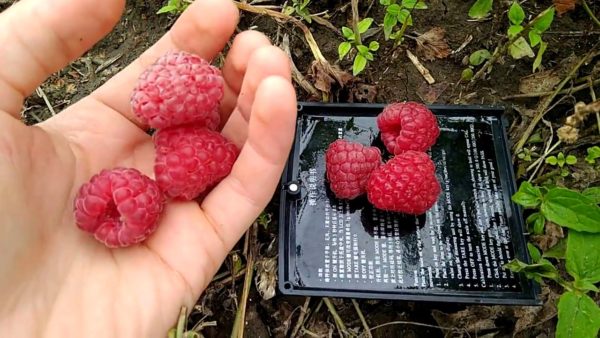

Octavia is a high-yielding variety
Species resistant to diseases and pests
- "Polka". The most popular remontant type, bearing fruit before frost.
- "Hercules". Frost-resistant, not whimsical in agricultural technology, large-fruited variety.
- "Tarusa". Standard look with huge red, fragrant berries.
- "Pride of Russia". Early maturing, frost-resistant, high-yielding.
- The Yellow Giant. The berry weight is 10-11 grams. Medium ripening.
Eurasia
Eurasia is a remontant variety of the middle ripening period of I.V. Kazakov. The bushes are medium in height, standard type, erect, not requiring trellis arrangement. Thorns are massively located in the lower part of the shoots, starting from the middle are rarer.The berries are large (3.5-4.5 g), conical, dark raspberry, sweet and sour, without a pronounced aroma. Tasting score 3.9 points out of 5.0. The variety is valued for an early and friendly return of the harvest, but recently it has not been multiplied by the copyright holder, as well as the Shapka Monomakh variety, due to the presence of more promising varieties.
Detailed description of the Eurasia variety


Thank you for reading this article to the end! You may also be interested in our analytical material dedicated to the best varieties of raspberries for Moscow and the Moscow region. The varieties that are optimally suited to the climatic conditions of the capital will show themselves well throughout the territory of Central Russia.
Care rules
Proper care of remontant raspberries will allow you to get healthy shrubs that will delight with berries from summer to the very frost.
Fertilization
Raspberry remontant is fed 2 years after planting.
The first feeding is combined with mulching, carried out immediately after the snow melts. Mulch from humus and straw (sawdust) is laid out under the plants. If mineral fertilizers are chosen, then they use:
- urea;
- ammonium nitrate;
- ammonium sulfate;
- azofosku.
Spring top dressing accelerates green mass gain.
In summer, when flowering and the appearance of the first berry, the raspberry bush is fed with potash or complex fertilizers:
- potassium sulfate;
- fertilizer "Ideal";
- nitrophobic.
Spraying with boric acid during flowering gives a good result.
In the fall, remontant raspberries are either cut out at the root, or the shoots are left for summer fruiting. In the second case, superphosphate (1 tsp) and calcium sulfate (1 tsp) are scattered under the bush.
Watering
Most of the root system of the culture is located superficially, so it does not tolerate a lack of moisture. In dry weather, it is watered 1-2 times a week to a depth of 15-30 cm.
Important! Watering should not be skipped before flowering and during the growth of berries, and before harvesting, to improve the taste of the berries, the amount of water supplied is reduced.
The culture also does not tolerate excessive soil moisture - this process must be controlled. The soil should be slightly damp.
The last abundant irrigation is carried out at the end of October.
Bush formation
One year passes from planting to fruiting of the remontant raspberry shoot.
When grown in a one-year cycle, the aerial part is completely cut off in the fall, without hemp. In the spring, the newly grown stems are thinned out, all weak or excess branches are removed.
You can prepare the plant for a two-year harvest. The one-year-old stem that has matured is left until next spring, later forming a bush along with new shoots. A two-year-old shoot is removed immediately after picking the berries, without waiting for autumn. The second crop will appear on a young branch.
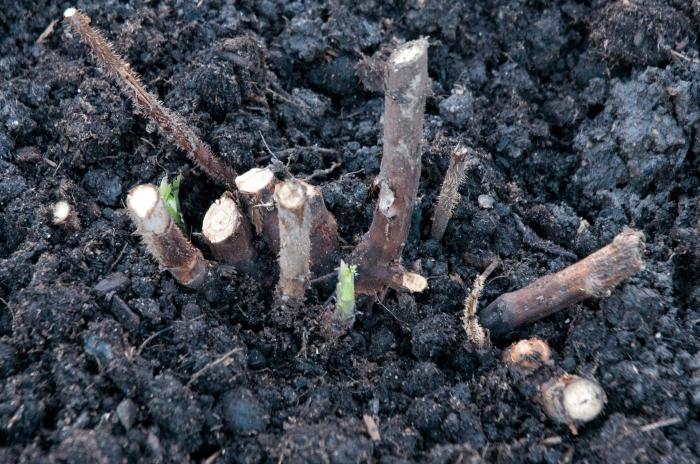

For the winter, all shoots of remontant raspberries are cut off
Preparing for the winter
After cutting off all the shoots of raspberries grown according to the principle of autumn fruiting, its root system is covered with a layer of mulch of 5 cm. You can use leaf litter for this.
Repaired varieties give the gardeners of the Urals and Siberia a chance to preserve their culture during critical frosts, in winters with little snow. Removing shoots at the root solves these problems.
Important! The branches are cut off as late as possible, the roots continue to accumulate nutrients until persistent cold weather.
To obtain a summer harvest, the stems are collected in a bunch and bent to the ground, fixing with soft wire. This is done at above-zero temperatures to avoid damage to the shoots. If it is not possible to bend, the bush is wrapped in a covering material.
The root system is also insulated with mulch.
Reproduction
Root offspring
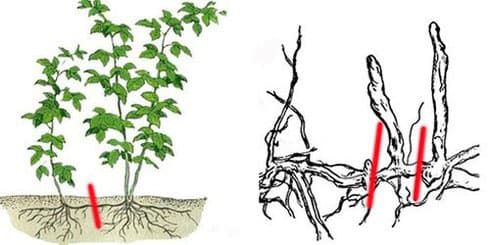

Reproduction of remontant raspberries using root suckers is not always possible, because many varieties practically do not form root shoots. The method consists in digging out root processes and transplanting them to another place.
The largest amount of material for propagation is given by bushes at the age of 4-5 years. When the processes have reached a height of 7-10 cm, they are dug up and planted. They are shaded from the sun and watered regularly. After two weeks, the offspring take root, they no longer need protection from the sun. By the fall, they get good seedlings, which are planted in a permanent place.
Root cuttings
After the autumn harvest, they dig out the root of the plant, choose a root with a diameter of at least 2 cm and divide it into pieces 10-12 cm long.They are planted on a separate bed, the depth of the holes should be from 6 to 8 cm.In the spring they will sprout, which regularly watered, mulched and fed. And by autumn they will be ready for transplantation to a permanent place.
Green cuttings


Green cuttings are harvested in late spring. For these purposes, annual stems are suitable, which have separated from the mother bush with a small root. They are dug up, then cut off at a height of 4-5 cm (the shoot should have a leaf rosette) and planted in a greenhouse (in a mixture of river sand and peat).
The stalk is intensively watered, fed and protected from diseases, after successful rooting, the greenhouse is regularly ventilated. You can also dip the cuttings into a growth promoter solution. This will increase the survival rate. After successful rooting, they are transplanted to a permanent place.
Let's sum up
Repaired varieties have a number of undeniable advantages over traditional varieties.
With a one-year growing cycle, we get the opportunity to have a harvest at a time unconventional for raspberries, raspberries ripen in the absence of the scorching sun, which is the main advantage in the south. By cutting off the shoots for the winter, it is possible to rid it of diseases and pests that hibernate on the bushes.
With a two-year cycle, amateurs have the opportunity to get two crops per season, and this, you see, is very attractive for every gardener.
The rules for growing remontant raspberries can be found in the video:
Gardeners reviews
Motorlab, Minsk
You will find from many sources that this variety is commercially viable. The cost of seedlings can be recouped already in the first year of planting, and the recoupment of other costs associated with planting and care - in three years, while receiving a stable annual income.
Urfin, Ulyanovsk
But by including an additional indicator for yourself, namely the safety of the berries after freezing in the refrigerator and further defrosting, restore their original shape, because jam is not always a panacea for everyone. I also became the leader of the Regiment.


